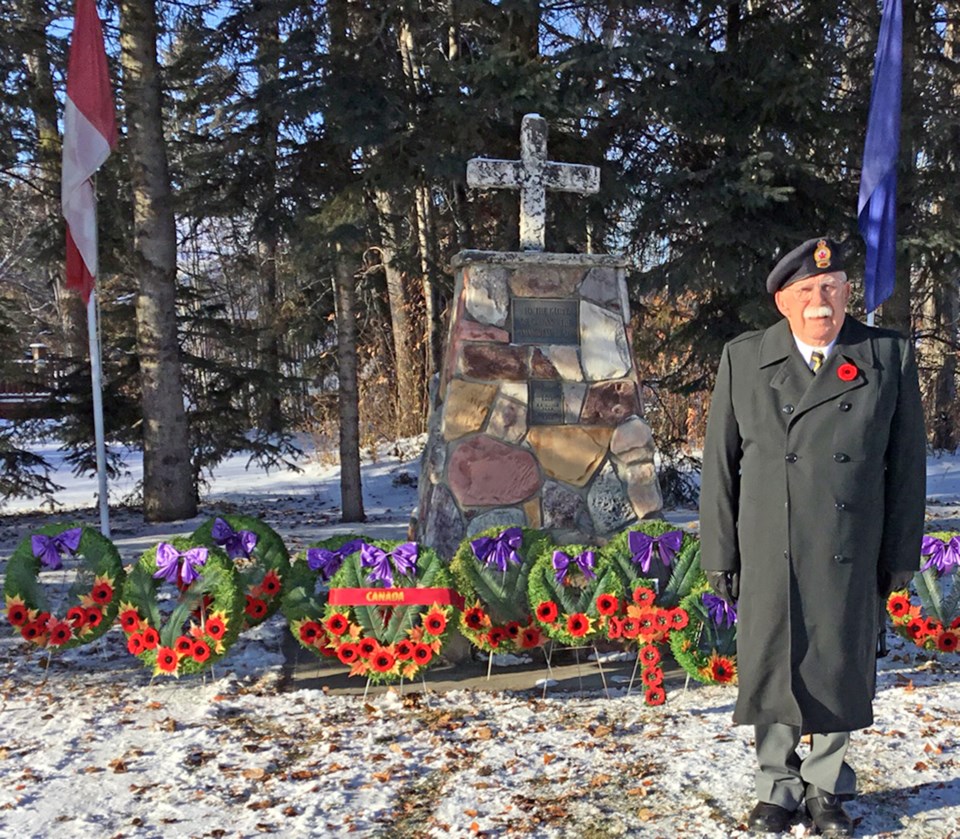WESTLOCK – Jim Turnbull, now 90, was only 17 years old when he joined the Royal Canadian Navy in search of adventure, excitement and to get the girls.
“I was a smart ass. I thought, ‘I have the uniform on, and all the girls would just flock to me.’”
At the time, he was living in Calgary and working at the CPR Ogden site and had gained experience with steam boilers when he saw a notice from the Navy saying they were looking for people with steam experience. Jim signed up right away but had to get his father's signature because he was underage.
"My dad did sign reluctantly,” said Jim. “He didn’t want to do it because he knew the Korean war was on. That was in 1951."
With a brief training period in Eastern Canada, where he learned to “dress like a Marine,” how to salute and iron his uniform, Jim's preparation for naval combat was rudimentary. He didn’t even learn to handle firearms in his training.
“It was a busy two weeks. The first thing they did was give me a haircut. They didn’t teach me to shoot a gun. That was all later.”
After the brief training, he was sent back to Western Canada to board a Navy destroyer and was shipped to sea. There were about 27 ships in the fleet, three of them Canadian ships.
“We sailed right into the thick of it,” he said, a slight shake in his voice.
He paused, unable to continue speaking. Tears welled up in his eyes, and he hit the bottom of his clenched fist onto the table, struggling to articulate the pain of those memories.
“I don’t like talking about it,” he said quietly, almost under his breath.
“I was at my battle station,” he continued, then stopped.
“I can’t talk about it,” he said quieter, his eyes tearing up as he again pounded his fist on the table trying to stop his emotions.
“It was hell. There were four of us [Canadians]. I was the only one that come out of it.
“I’m not a hero,” he added. “Those three boys that were buried at sea, they are the heroes.”
The Korean War began June 25, 1950, and the combat phase lasted until July 27, 1953, according to the Canadian Encyclopedia. Military personnel from 16 countries, including 26,791 Canadians served during the combat phase. Five-hundred-sixteen Canadians lost their lives and more than 1,200 were wounded.
The intense and chaotic combat was the last thing Jim clearly remembered. The next thing he remembered was waking up in the veteran hospital in San Diego, thinking, “Where the hell am I?”
He paused as he glanced off into the distance. As Jim reflected on the fierce combat, it was clear that for many veterans, the battle continues long after the guns have fallen silent.
“I was in the hospital for a year in San Diego,” he said, before repeating under his breath, “War is hell.”
After being released from the veteran’s hospital a year later, the Canadian Navy gave him a year off.
But almost dying in combat didn’t deter Jim from returning to the Navy and going overseas.
“I went back in and went back to sea. I love that. I love the sea.”
For several years Jim was on different ships for peace keeping missions. He sailed on two world trips.
“The Korean War had ended. It was all peace time work from there on."
Seeing combat and his fellow seaman die couldn’t deter Jim from being in the Navy but an inexperienced officer above him could. Jim had been standing relaxed, at ease, when the officer approached him.
“A kid demanded my respect. He was a kid. I drank more sea water than he ever sailed on. He was a midshipman.
“This kid came up and stamped at attention beside me and demanded a salute and I looked at him and I pulled his hat down over his ears,” a noticeable smirk went across his face as he recalled the memory.
Jim was reprimanded, docked six days pay, and that was it for him. He didn’t want to continue in the Navy anymore, saying things had changed too much for his liking.
Now, when Jim gets together with his fellow veterans, they don’t talk about the war, he said.
“We talk about the good memories,” he said with a smile, adding that he can’t talk about them. “They were exciting. I was a naval seaman with no good conduct stripes. I have been asked to never return to Panama City.”
Since leaving the Navy, Jim has lived in various towns and cities. He eventually found himself in Jarvie, just north of Westlock. There, he said him and John Tyrell brought Remembrance Day Services back to Jarvie and have kept it going.
“The first thing we did was rebuild the Cenotaph, put in new flag poles and new flags up.”
Linda Foster in Jarvie also works hard for the veterans, he said.
Jim’s humility was evident as he reiterated that he’s not the hero, and instead, it’s those who didn’t come home.
“The difficult part for me is remembering the boys that didn’t come home. I have a hard time with that.”
Tears welled up in his eyes again.
“On Nov. 11, we all show up at the Cenotaphs. We wear our medals and people on the outside think we’re the heroes but we’re not. The reason we are there is to remember the boys and girls that didn’t make it.”


